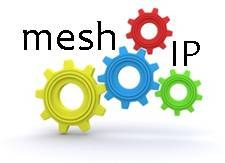 Some businesses are looking at the global reach of the Internet and cloud computing as a way to extend a new form of disaster assistance — one business offering service to a company in an affected area as a way to help it keep its processes running.
Some businesses are looking at the global reach of the Internet and cloud computing as a way to extend a new form of disaster assistance — one business offering service to a company in an affected area as a way to help it keep its processes running.
In cloud operations, it is expected that multiple copies of a data set will be created and kept in synch. Three is the magic number for Cassandra, MongoDB, and various other big data handling systems. Cloud storage company Nirvanix says it will shift a copy to another continent if your data is in its Node 3 data center in Japan.
“Should our customers have the desire to move their data out of the region, we will make sure that it is transitioned smoothly and in a timely manner, with no disruption to their business operations,” said Scott Genereaux, CEO of Nirvanix. The service will be provided for free, and options include moving it to a data center in New York, Los Angeles, Dallas, or Frankfurt, Germany.
The offer is merely a precaution, as Nirvanix expects its Japan data center to continue operating. It’s 200 miles away from the northern Honshu area affected by the tsunami. But the offer is still one that some customers may consider, given the fact that Japanese utilities have imposed rolling blackouts. It also remains unclear whether authorities will have the ability to contain the threatened meltdown of the Dai-ichi nuclear power plant.
The practice of a business offering a free service to another in an area hit by natural disaster could become a new form of international aid, says David Vellente, co-founder of Wikibon.org, a professional IT community site where members share problem solutions for free. “In times like these, we want to send money, aid, resources… prayers. This gesture by Nirvanix is business helping other businesses in a time of need,” he said.
Cloud computing practices make the extension of this type of aid much more feasible than before.
In addition to data protection, the state of undersea cabling in the earthquake area has remained a cause for concern. “We understand the sub-sea communications infrastructure has been impaired and would like to offer our assistance in the restoration effort,” said Kei Furuta, managing director of co-location facility provider Equinix in Tokyo.
Equinix is willing to generate VLANs over its exchange fabric to let those service providers with spare capacity to set up bilateral VLAN connections through its two Tokyo facilities, which have not been affected by the disaster. The service will be provided for free, if a request is sent to ap-noc@ap.equinix.com. Amazon Web Services is not making any special offers of assistance. But by coincidence, it announced that it had opened data centers in the Tokyo area in early March and spokesmen confirmed that they remain in operation. The region became EC2’s fifth data center concentration, after Amazon US-East in Northern Virginia, Amazon US-West in Washington State, its European centers in Dublin, Ireland, and an existing Asian data center in Singapore.
Anyone needing to know whether the Asia Pacific region is operating normally can check by consulting the Amazon Service Health Dashboard.
Under some circumstances, virtual appliances or virtual machine images of existing workloads can be created in the enterprise data center and stored in a cloud data center. In the event of a failure of the former, the virtual machines serve as recovery mechanisms that can be reactivated in the cloud.
In a conversation with SunGard’s Indu Kodukula at Cloud Connect 2011, a UBM TechWeb event, he told me that 90% of SunGard customers are now either using — or at least experimenting with — the virtual machine re-activation at a remote site as their disaster recovery mechanism. Previous disaster recovery consisted of near look-alike hardware installations in separate locations, with identical software stacks. Keeping the two sites in synch was difficult, and a full test of the system was awkward to implement, since it meant shutting down production systems in the hope that they could be quickly reactivated in the recovery location.
“Every one of our customers is running (as a test) at least one production system in the cloud,” said Kodukula, which at the moment meant a SunGard data center facility running VMware ESX Server virtual machines. In the future, the practice may become widespread across all virtual machine users, tapping into different cloud facilities, as customers choose.
One other note: Telehouse America, a supplier of managed IT services in the United States and Japan, says its 21 data centers in Japan, including its Sendai facility in the tsunami affected area, are all operational. As the three-hour mandatory blackouts hit its data centers, they will resort to their backup power generators, which have a 24-hour fuel supply with the ability to refuel as needed. The Amazon and Equinix data centers in all likelihood operate on a similar basis.
Disasters will continue to occur. Indeed, my home area of San Francisco and the Silicon Valley, allegedly on a 100-year cycle for big earthquakes, is overdue. Its nerves are on edge after three large quakes have struck on the ring of fire around the Pacific Rim. They include Chile on Feb. 27, 2010 (8.8 magnitude), Christchurch, New Zealand, on Feb. 22 (7.1), and Japan on March 11 (9.0). The Great San Francisco earthquake of 1906 has been estimated as a 7.9 event. (This list neglects the 7.0 quake that hit Haiti on Jan. 12, 2010, not on the Pacific Rim.)
Before the next disaster strikes, think about how reliance on a second data center in the cloud might provide a guarantee of continued operation, if the unthinkable happens and your primary systems are disabled or destroyed. And think about extending a helping hand to the next guy, if you’re left standing up after a disaster.
- The Customer Edge Drives the Need for NaaS - June 25, 2023
- Blockchain Evolves And Secures - January 13, 2019
- Bessemer Ventures’ 2018 Cloud Computing Trends - February 25, 2018




